“Hip dips” are the latest body part trending on social media.
Despite being a normal feature of body shape, many want to know how to get rid of hip dips.
This has stirred debate online.
Some health and fitness “influencers” claim you can lose hip dips by doing their specially curated “hip dip workouts,” while others argue hip dips are shaped by your bones, so you can’t alter them through lifestyle changes.
But what are hip dips exactly?
What causes hip dips?
And can you get rid of hip dips with diet and exercise?
Get evidence-based answers to these questions and more in this article.
What Are Hip Dips (Violin Hips)?
“Hip dips,” also known as “violin hips,” refer to the inward curves along the sides of your body, just below the hip bones and above the thighs. Here’s how they look:
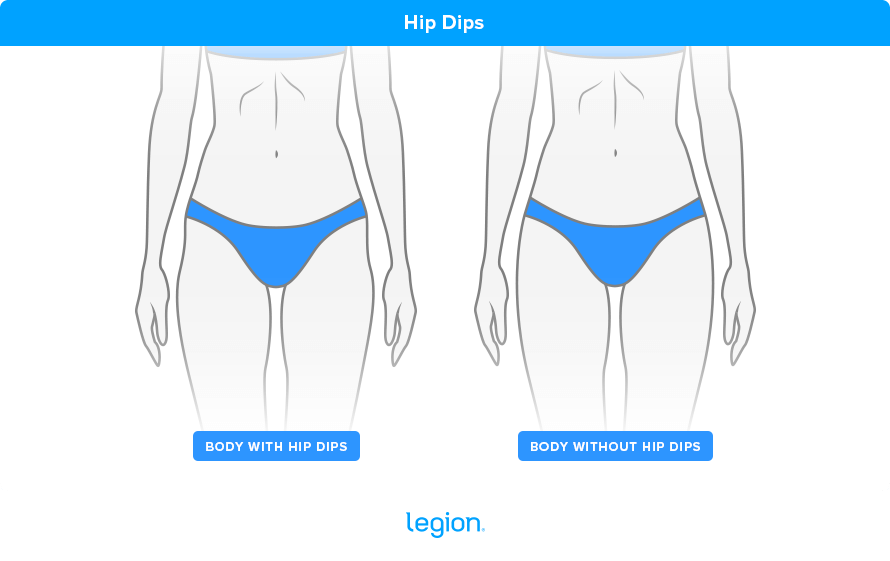
Recently, hip dips have become a topic of negative attention on social media, with some viewing them as a flaw to be fixed.
This is misguided.
Hip dips are a completely normal and natural part of anatomy. Everyone has them (including men), though some people’s bone structure makes their hip dips more prominent. They can also become more visible when you have lower levels of body fat and underdeveloped glutes.
What Causes Hip Dips?
The primary cause of hips dips is bone structure.
The main factors to consider are:
- The distance between the top of your thigh bone (greater trochanter) and the top edge of your hip bone (iliac crest).
- The length and angle of the bone that connects your thigh bone to your hip joint (femoral neck).
If there’s a big space between your thigh bone and hip bone and you have a longer femoral neck that connects almost vertically, you’re more likely to have noticeable hip dips. If the space is smaller and the femoral neck bone is shorter and connects almost horizontally, hip dips are less likely to be noticeable.
Here’s a picture to show what that looks like:
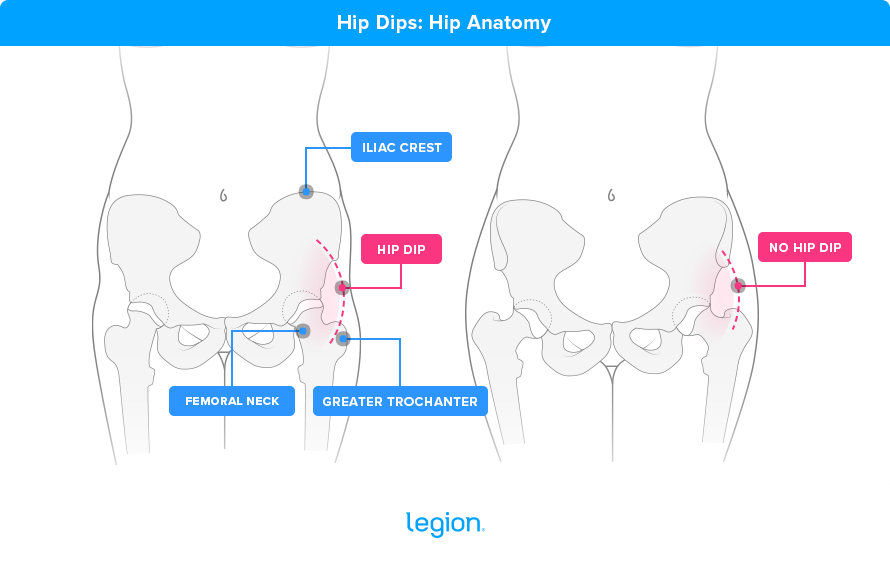
The amount of fat and muscle in the hip and butt region can also affect the depth of your hip dips.
For instance, if you have a low body fat percentage or typically don’t store fat around the hips and butt, your hip dips may appear deeper. Likewise, if you have small glute muscles, hips dips may be slightly more pronounced.
Crucially, however, body fat and glute size have a much smaller impact on hip dip appearance than bone structure. And since genetics determine bone structure, you can’t completely change the appearance of hip dips through diet and exercise.
Nevertheless, the right exercises can strengthen and build the glute muscles and potentially reduce the visibility of violin hips by adding muscle mass to the sides of your butt.
[Read More: How to Get a Bigger Butt Fast]
Hip Dips vs. Love Handles
Many people compare hip dips vs love handles, but they’re two distinct bodily features and the comparison makes little sense.
Hip dips are the natural curves below your hip bone shaped by your bone structure. Your genetics determine whether you have hip dips, so you can’t greatly change their appearance through diet and exercise.
Conversely, “love handles” refer to any fat stored on the sides of your torso at navel height. Unlike hip dips, you can reduce the appearance of love handles through lifestyle changes because they’re related to body fat levels rather than bone structure.
If you want to learn more about how to lose fat around your back and sides, check out this article:
How to Get Rid of Lower Back Fat.
Can You Get Rid of Hip Dips?
You can’t get rid of hip dips entirely since they’re mainly due to your bone structure, which you can’t alter. Nevertheless, building butt muscle and enhancing body composition may lessen their appearance.
9 Hip Dip Exercises for Hip Strength and Health
Here are nine top-tier exercises for gaining butt muscle and strength:
1. Squat
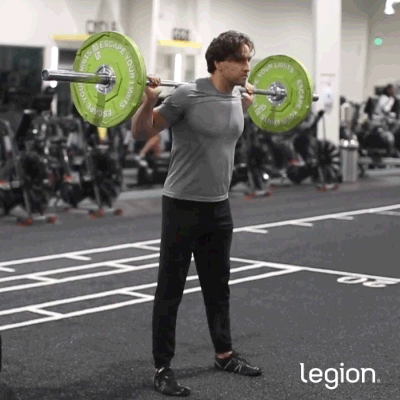
Research shows the squat is one of the most effective exercises for developing hip strength and stability, especially when you squat to parallel or deeper.
How to Do the Squat:
- Position a barbell in a squat rack at about mid-chest height.
- Step under the bar, pinch your shoulder blades together, and rest the bar above the bony ridges on the bottom of your shoulder blades.
- Lift the bar out of the rack, take 1-to-2 steps backward, and place your feet slightly wider than shoulder-width apart, with your toes pointing slightly outward.
- Keeping your back straight, sit down and push your knees out in the same direction as your toes.
- Stand up and return to the starting position.
2. Deadlift
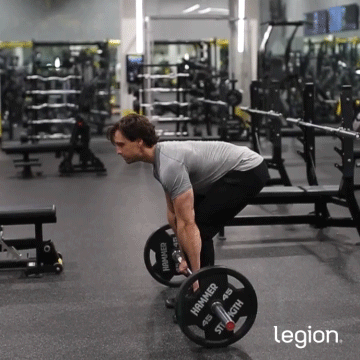
The deadlift trains your entire lower body and allows you to lift heavy weights safely, making it ideal for gaining lower-body strength and muscle.
How to Do the Deadlift:
- Position your feet slightly narrower than shoulder-width apart with your toes pointed slightly out.
- Move a loaded barbell over your midfoot, so it’s about an inch from your shins.
- Grip the bar just outside your shins with your palms facing you.
- Flatten your back and drive your body upward and slightly back by pushing through your heels until you’re standing up straight.
- Reverse the movement and return to the starting position.
3. Single-Leg Hip Thrust
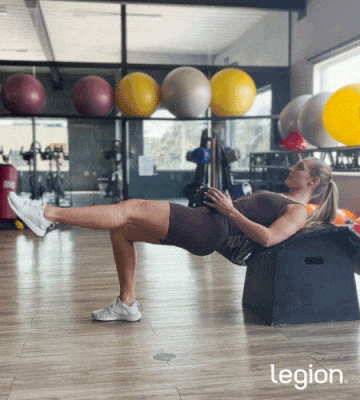
The single-leg hip thrust is a lower-body exercise that trains the glutes one side at a time, making it useful for finding and fixing butt muscle size and strength imbalances.
How to Do the Single-Leg Hip Thrust:
- Sit on the ground with your shoulders resting against a bench perpendicular to your body.
- Place a dumbbell in your hip crease.
- Plant your feet on the floor about shoulder-width apart and 12-to-18 inches from your butt so your knees are bent to about 90 degrees.
- Straighten your left knee to lift your left leg off the floor.
- Push the dumbbell upward by pressing through your right heel until your upper body and right thigh is parallel to the ground and your right shin is vertical.
- Reverse the movement and return to the starting position.
- Once you’ve completed the desired number of reps, repeat the process on your left side.
4. Single-Leg Romanian Deadlift

The single-leg Romanian deadlift establishes a stronger “mind-muscle connection” with your glutes by focusing on one side of your body at a time, which may enhance muscle growth in some scenarios.
How to Do the Single-Leg Romanian Deadlift:
- In a standing position with legs straight, hold a dumbbell in your right hand in front of your right thigh.
- Flatten your back and lower the weight toward the floor in a straight line while keeping your right leg mostly straight, allowing your butt to move backward and your left leg to straighten behind you as you descend.
- Once you feel a stretch in your right hamstring, bend your right knee slightly more, and continue lowering the weight until your lower back begins to round.
- Reverse the movement and return to the starting position.
5. Step-up
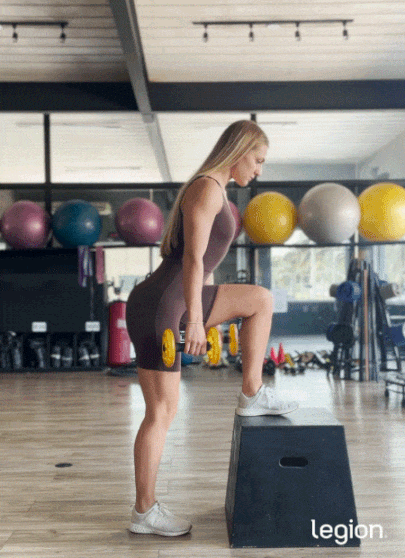
The step-up is an outstanding glute exercise that’s easier on your knees and back than other lower-body exercises.
How to Do the Step-Up:
- Holding a dumbbell in each hand, place your right foot on a box, bench, or other surface about knee height off the floor.
- Keeping your weight on your right foot, fully straighten your right leg.
- Lower your left leg toward the floor and return to starting position.
6. Curtsy Lunge
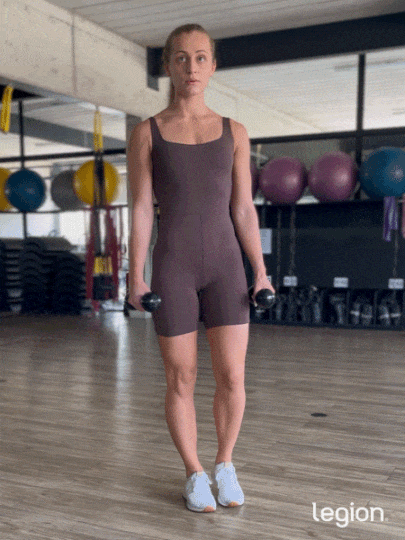
The curtsy lunge is challenging on the knees, but great for lower body muscle growth. If you have knee pain or you’re new to weightlifting and lack coordination and balance, you may prefer a different butt-building exercise from this list.
How to Do the Curtsy Lunge:
- Holding a dumbbell in each hand, stand with your feet about hip-width apart.
- Step diagonally backward with your left leg so that it crosses your right leg.
- With most of the weight on the right leg, lower your body by bending both knees at the same time until the left knee touches the floor.
- Reverse the movement and return to standing position.
- Once you’ve completed the desired number of reps, repeat the process on your left side.
7. Reverse Lunge
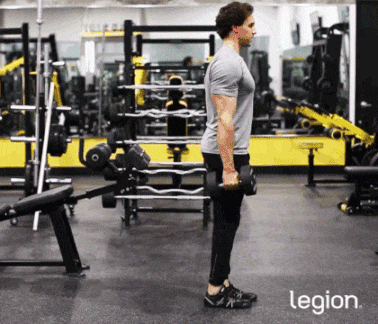
While all lunge variations train your entire lower body to a high degree, the reverse lunge emphasizes the glutes the most.
How to Do the Reverse Lunge:
- Holding a dumbbell in each hand, stand upright with your feet hip-width apart.
- Step back about two-to-three feet with your left foot, placing most of your weight on your right foot.
- Lower your body by bending both knees until your left knee touches the floor.
- Push off the floor with your right foot and lean slightly backward, allowing your legs to straighten.
- Once standing, bring your left foot forward so that it’s next to your right foot, then repeat on your left side.
8. Glute Bridge
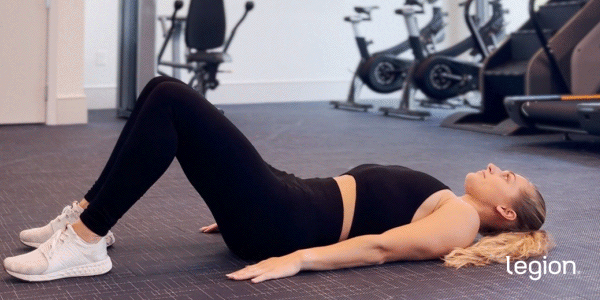
Glute bridges are a great butt-building exercise because they’re easy to learn, use your own body weight, and effectively isolate and strengthen the glutes.
How to Do the Glute Bridge:
- Lie on your back on the floor, keeping your arms by your sides and palms touching the floor.
- With knees bent, place your feet 15-to-18 inches apart and 6-to-12 inches from your butt, pointing your toes slightly outward.
- Lift your butt off the floor by pressing your shoulders and heels into the floor, pushing your knees out in the same direction as your toes, and squeezing your glutes.
- Continue thrusting your hips upward until your butt, hips, and knees form a straight line and your shins are vertical.
- Reverse the movement and return to the starting position.
9. Cable Side Leg Raise
Cable side leg raises are a great hip strengthening exercise that train the outer hip, thigh, and glutes. If you don’t have access to a cable machine, you can get a similar workout lying on your side on the floor and raising and lowering your top leg. If you choose this method, use ankle weights to increase the resistance as you gain strength.
How to Do the Cable Side Leg Raise:
- Set the pulley on a cable machine to the lowest setting and connect the cuff attachment.
- Stand with one shoulder next to the cable machine, keeping your feet shoulder-width apart.
- Secure the cuff around your outer ankle.
- Place your outside hand on your hip and the other hand on the cable machine.
- Raise the outer leg to your side as far as possible
- Reverse the movement and return to standing position.
A Simple Hip Dip Workout for Strong, Sculpted Hip Muscles
Since hip dips are a natural and harmless part of anatomy, there’s no reason to do “hip dip workouts” aimed at “fixing” them. That said, if your hips dips are a hangup you’d prefer to minimize, building glute muscle may help a little.
More importantly, it also boosts your physical performance in just about every way, including helping you lift heavier weights, run faster, jump higher, and stay injury-free.
For best results, replace a leg or lower body workout in your strength training plan with this hip dip workout:
- Squat: 3 sets of 6-to-8 reps with 2-to-3 min rest
- Single-Leg Romanian Deadlift: 3 sets of 8-to-10 reps with 2-to-3 min rest
- Step-up: 3 sets of 8-to-10 reps with 2-to-3 min rest
- Cable Side Leg Raise: 3 sets of 10-to-12 reps with 2-to-3 min rest
Hip Dips FAQs
FAQ #1: What are hip dips caused by?
Hip dips are caused by the bone structure of your hips and thighs. If you have more space between the upper part of the thigh bone (greater trochanter) and the top of the hip bone (iliac crest) and a longer femoral neck that connects close to vertically (the upper thigh bone that connects to the hip joint), you may have a more distinct hip dip.
The amount of muscle and fat you have in the hip and butt region may influence the depth of the dip. Having less muscle and fat may mean a deeper dip.
FAQ #2: Are hip dips attractive?
Whether hip dips are attractive or not is subjective. However, hip dips are a natural part of the body, largely determined by genetics and not something you can control.
FAQ #3: Are hip dips good or bad?
Hip dips are neither good nor bad; they’re a normal part of the body’s structure. Despite what you see on social media, hip dips aren’t a flaw that needs fixing. They’re not a medical problem or harmful to your health.
Scientific References +
- Barbalho, Matheus, et al. “Back Squat vs. Hip Thrust Resistance-Training Programs in Well-Trained Women.” International Journal of Sports Medicine, vol. 41, no. 5, 23 Jan. 2020, https://doi.org/10.1055/a-1082-1126.
- Caterisano, Anthony, et al. “The Effect of Back Squat Depth on the EMG Activity of 4 Superficial Hip and Thigh Muscles.” Journal of Strength and Conditioning Research, vol. 16, no. 3, 1 Aug. 2002, pp. 428–432, pubmed.ncbi.nlm.nih.gov/12173958/.
- Simenz, Christopher J., et al. “Electromyographical Analysis of Lower Extremity Muscle Activation during Variations of the Loaded Step-up Exercise.” Journal of Strength and Conditioning Research, vol. 26, no. 12, Dec. 2012, pp. 3398–3405, https://doi.org/10.1519/jsc.0b013e3182472fad.
- Park, Sanghoon, et al. “Comparative Analysis of Lunge Techniques: Forward, Reverse, Walking Lunge.” ISBS - Conference Proceedings Archive, 6 Nov. 2016, ojs.ub.uni-konstanz.de/cpa/article/view/6941.
- Park, Samho , et al. Comparative Study of the Biomechanical Factors in Range of Motion, Muscle Activity, and Vertical Ground Reaction Force between a Forward Lunge and Backward Lunge. June 2021, p. Physical therapy rehabilitation science 10(2):98-105, https://doi.org/10.14474/ptrs.2021.10.2.98.
- Morin, Jean-Benoît, et al. “Sprint Acceleration Mechanics: The Major Role of Hamstrings in Horizontal Force Production.” Frontiers in Physiology, vol. 6, no. 404, 24 Dec. 2015, www.ncbi.nlm.nih.gov/pmc/articles/PMC4689850/, https://doi.org/10.3389/fphys.2015.00404.
- Millar, Nicole A, et al. “In-Season Hip Thrust vs. Back Squat Training in Female High School Soccer Players.” International Journal of Exercise Science, vol. 13, no. 4, 2020, pp. 49–61, www.ncbi.nlm.nih.gov/pmc/articles/PMC7039497/#b34-ijes-13-4-49. Accessed 5 Mar. 2024.
- Buckthorpe, Matthew, et al. “ASSESSING and TREATING GLUTEUS MAXIMUS WEAKNESS - a CLINICAL COMMENTARY.” International Journal of Sports Physical Therapy, vol. 14, no. 4, 2019, pp. 655–669, www.ncbi.nlm.nih.gov/pmc/articles/PMC6670060/.











